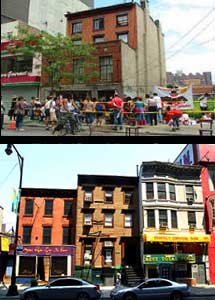 New Yorkers showed great resistance to fighting in the Civil War, but there were pockets of support for the Union cause, especially in Brooklyn.
New Yorkers showed great resistance to fighting in the Civil War, but there were pockets of support for the Union cause, especially in Brooklyn.That's one of the new revelations in an upcoming exhibit jointly organized by the Brooklyn Public Library and Green-Wood Cemetery. The Brooklyn Daily Eagle reports on it in "Brooklyn Examines Its Civil War History":
Although there were no battles fought in Brooklyn during the Civil War, as the third largest city in the Union at the time, Brooklyn provided “tens of thousands of soldiers to the Union Army” as well as a crucial industrial base, according to Richman, who is also the curator of “Enshrined Memories: Brooklyn and the Civil War.”
“I was amazed that a number who were killed in battle were brought back to Brooklyn to be buried when most casualties were buried on the field,” said Richman. He also noted that “Brooklyn was more sympathetic toward abolitionism than New York City,” pointing out that during the 1863 Draft Riots in Manhattan, many blacks fled to Weeksville, an established free black community in central Brooklyn.
This seems to bolster the view that Duffield Street was possibly an important stop on the Underground Railroad. Slaves could escape from the south to Long Island, find refuge in Weeksville, travel along what is now Atlantic Avenue and then hide on Duffield Street on their way down to the East River to get a boat to Canada.
In any case, there seem to be many more surprises in store as we discover Brooklyn's 19th century history.
